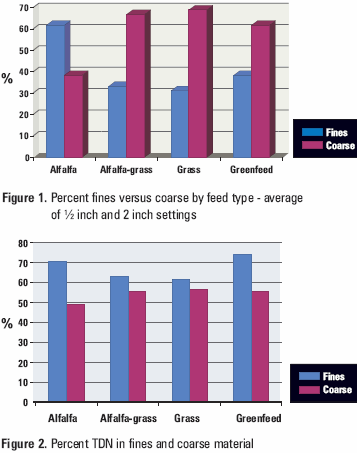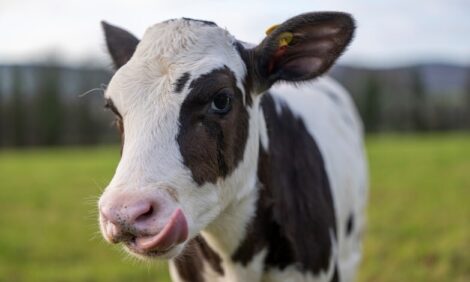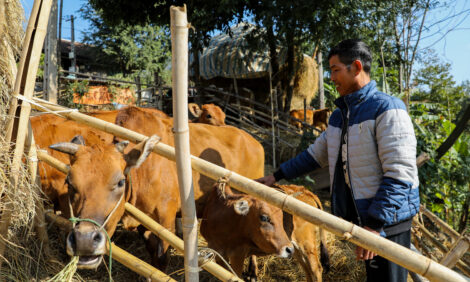



Effect of bale processing on particle size
By the Alberta Agriculture, Food and Rural Development - Round bale processors are commonly used for feeding beef cattle over winter. Feeds with a higher proportion of fines after processing may be more susceptible to higher dry matter and nutrient losses due to trampling.This factor raises the question: what is the effect of processing on particle size distribution in the windrow and potential feeding losses?
Round bale processors are commonly used for feeding beef cattle over winter. Feeds with a higher proportion of fines after processing may be more susceptible to higher dry matter and nutrient losses due to trampling. This factor raises the question: what is the effect of processing on particle size distribution in the windrow and potential feeding losses?
To address this question, Alberta Agriculture Food and Rural Development and Agriculture Technology Centre specialists began a project in 2004. The study was designed to measure the effect of bale processing on particle
size distribution in the windrow with four types of dry hay.
Materials and methods:
A bale processor with a large diameter closed drum rotor with flail hammers was used. Two smaller rotors with angled plates assisted bale feeding into the rotor Material processing rate and cutting length were controlled by an adjustable hoop grate, which varied the flail exposure available to grab the material. A lower flail exposure results in slower processing and shorter material cut length. The unit had deflectors to direct processed material into a windrow.
Four hay types; alfalfa, alfalfa-grass (30% alfalfa: 70% grass), grass (Crested Wheat) and oat greenfeed were selected. Each feed type was tested for nutrient quality before processing. Half inch and 2 inch flail depth settings were used on each feed type to measure the effect of flail setting on particle size in the windrow.
Four samples from each feed type and flail setting were collected in large tubs placed on the ground. The exterior weathered portion of the bale was excluded from the sample. Each sample was weighed before sieving. A ¾ inch screen was used to separate fine and coarse material. The fine and coarse samples were weighed to calculate their percentages of the original sample weight.
Feed analysis samples were collected from the fines and coarse material for each feed type and flail setting. Samples were sent to a feed testing lab for analysis.
This process was repeated with three bales of each hay type.

Results
Feed type significantly affected the percentage of fine versus coarse material in the windrow. Flail settings had no effect. As shown in Figure 1, processing had a greater effect on alfalfa hay than on the other three hay types.Feed analysis reports indicated the fine material had higher concentrations of energy, protein and minerals than the coarse material. The coarse material had higher fiber content, therefore lower total digestible nutrients (TDN), as shown in Figure 2. Loss of the fine material during feeding may result in the cattle not receiving adequate feed to meet their nutrient requirements.
Discussion/Conclusion
Feed type had a greater effect on fine versus coarse material in the windrow than the flail settings. For example, legume hays, which have higher leaf content, will generate more nutrient-dense fines. Field observations indicated fines accumulate in the bottom of the windrow. Greenfeeds harvested beyond the mid-dough stage may have more grain shelling, leading to high grain content in the fines after processing. Feeds with higher fines content after processing are more susceptible to higher feeding losses when feeding on the ground or snow. These feeding losses and nutritional effect on the ration are investigated in Study 2.Take-home message:
To minimize feeding losses, be aware of the effect of bale processing on different feed types and manage your feeding program accordingly. Consider feeding systems that include feed bunks or fence line feeders to avoid feed quantity and quality losses.January 2007


